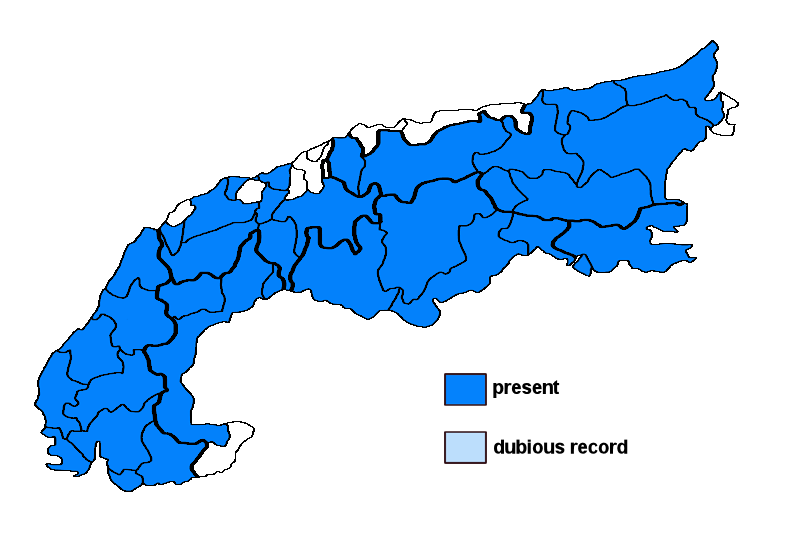Caloplaca ferruginea (Huds.) Th. Fr.
Syn.: Biatora ferruginea (Huds.) Fr., Blastenia ferruginea (Huds.) A. Massal., Callopisma ferrugineum (Huds.) Trevis., Caloplaca aurantiaca (Lightf.) Th. Fr. non auct., Gasparrinia ferruginea (Huds.) Tornab., Lecanora ferruginea (Huds.) Link, Lichen ferrugineus Huds., Placodium ferrugineum (Huds.) Hepp
Lichenised.
Substrate: bark
Altitudinal range: from the mesomediterranean belt (potential vegetation: evergreen broad-leaved forests dominated by Quercus ilex) to the subalpine belt (potential vegetation: open, taiga-like forests dominated by Larix decidua and/or Pinus cembra and Rhododendron)
Note: a mild-temperate species, with optimum on oaks in the submediterranean belt, absent from heavily disturbed areas. According to Vondrák (see Nimis 2016) three widespread species looking like ""C. ferruginea"" are known from Europe. Two of them are probably absent from the Alps, most of the records being from oceanic Europe and Macaronesia. The species common in the Alps has a mainly southern distribution in Europe, reaching Southern England and Central Europe (no recent records from Germany), and does not belong to C. ferruginea in the strict sense.
Austria: Vorarlberg; Tirol; Salzburg; Kärnten; Steiermark; Oberösterreich; Niederösterreich (incl. Wien); Switzerland: Bern; Graubünden; Luzern; Schwyz; Ticino; Uri; Vaud; Valais; France: Alpes-de-Haute-Provence; Haute-Alpes; Alpes-Maritimes; Drôme; Isère; Savoie; Haute-Savoie; Vaucluse; Var; Italy: Friuli; Veneto; Trentino Alto Adige; Lombardia; Piemonte; Valle d'Aosta; Slovenia: Alpine and Pre-Alpine Slovenia; Trnovsky Gozd;





